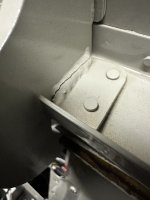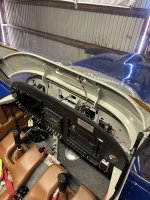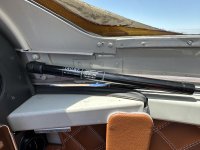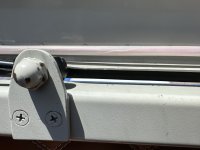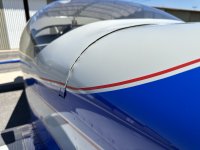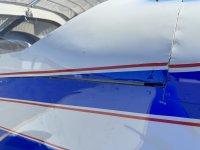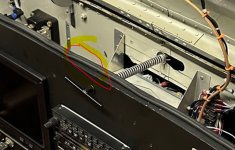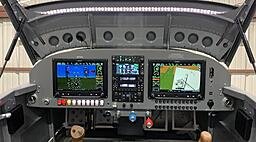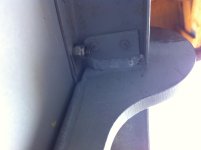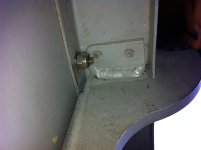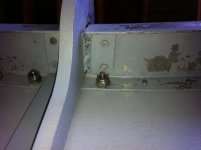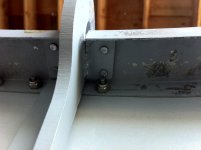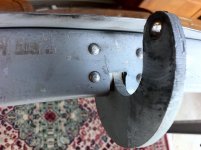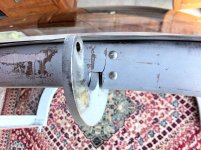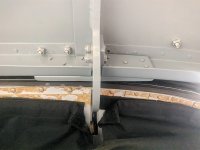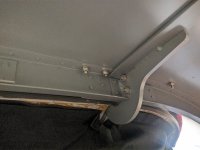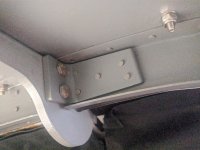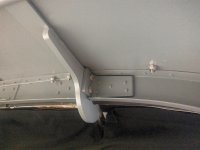The other day I had the right side canopy seal get partially sucked out into the breeze during a flight. I figured I just needed a new seal.
But after looking into it further, I noticed that a gap develops between the canopy seal and the fuselage in flight. The airflow over the canopy seems to create lift. But this gap happen on the left side of the canopy, only on the right side. Both sides are well sealed on the ground, but once airborne that gap develops only on the right.
I've never been happy with how the canopy fits, especially on that side. FWIW, I did not build the aircraft.
Anyway, after searching the VAF forums, I read of a -6 owner who found a crack in the canopy frame where the hinge arm is welded to it. So I inspected my own airplane in that area and sure enough, found the weld was cracked.
I talked to my mechanic about it, and we're not sure quite how to proceed. I also emailed Savvy, and the ticket was handed off to someone who owns an RV and also maintains a couple of them, but his best suggestion was to contact Van's and see what they say. I did email them but haven't heard back. I assume they're busy with the LCP issue.
In the previously mentioned VAF thread, there was discussion about having it re-welded, but there was concern about applying heat that close to the plexiglas. How much would be transmitted to the glass through the frame, etc. There was also mention about replacing the weld with a stiffener or bracket.
I also noticed that the thread is 12 years old, so I'm not sure what experiences and repair methods have been seen by the proverbial brain trust since that time.
I'd welcome any ideas on how to:
a) repair the hinge weld
b) improve the fit of the canopy
c) get the right side to stop lifting in flight
Many thanks,
--Ron
But after looking into it further, I noticed that a gap develops between the canopy seal and the fuselage in flight. The airflow over the canopy seems to create lift. But this gap happen on the left side of the canopy, only on the right side. Both sides are well sealed on the ground, but once airborne that gap develops only on the right.
I've never been happy with how the canopy fits, especially on that side. FWIW, I did not build the aircraft.
Anyway, after searching the VAF forums, I read of a -6 owner who found a crack in the canopy frame where the hinge arm is welded to it. So I inspected my own airplane in that area and sure enough, found the weld was cracked.
I talked to my mechanic about it, and we're not sure quite how to proceed. I also emailed Savvy, and the ticket was handed off to someone who owns an RV and also maintains a couple of them, but his best suggestion was to contact Van's and see what they say. I did email them but haven't heard back. I assume they're busy with the LCP issue.
In the previously mentioned VAF thread, there was discussion about having it re-welded, but there was concern about applying heat that close to the plexiglas. How much would be transmitted to the glass through the frame, etc. There was also mention about replacing the weld with a stiffener or bracket.
I also noticed that the thread is 12 years old, so I'm not sure what experiences and repair methods have been seen by the proverbial brain trust since that time.
I'd welcome any ideas on how to:
a) repair the hinge weld
b) improve the fit of the canopy
c) get the right side to stop lifting in flight
Many thanks,
--Ron

